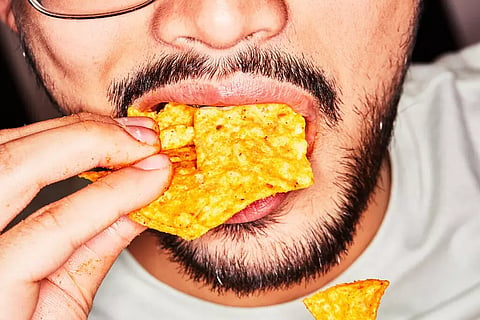

By Jacob E Gersen
NEW YORK: Today, Sylvester Graham is best known for the cracker that bears his name. But in his heyday, Graham was an influential writer and lecturer on wholesome living. The term “mobbed” was apparently coined to describe what often happened when he spoke; having advocated for chastity in marriage and home cooking, he literally got chased out of town by husbands and bakers.
In an 1837 treatise, Graham warned of a dire threat: public bread. Commercial bakers, he worried, were using inferior flour, produced by farmers intent on squeezing profit from the soil. In addition to less nutritious wheat, bread-makers were also allegedly adding chemical agents and mixing in chalk, clay and plaster to increase weight and enhance color. Fake food was making people sick.
Nearly 200 years later, Chris van Tulleken sounds a similar alarm in “Ultra-Processed People.” A doctor, scientist and journalist who has worked on infectious diseases, the author writes that in addition to sickening us, ultra-processed food is destroying the planet, eradicating traditional cultures, shrinking our faces, possibly making us infertile and leaving us helpless against future microbial threats.
But what is ultra-processed food? The term comes from a relatively recent classification scheme called NOVA. (Think of it as a competitor to the traditional food groups of fruits, vegetables, grains, proteins and dairy.) Created by researchers in Brazil, in the past decade NOVA has been widely adopted by NGOs, activists and researchers.
Food Group 1 is defined as “unprocessed or minimally processed foods,” things like meat, fruit, flour and pasta. Group 2 is “processed culinary ingredients” — oils, butter, sugar, honey and starches. Group 3 is “processed food”: ready-to-eat mixtures of the first two, processed for preservation, meaning beans, salted nuts, smoked meat (and, notably, “proper freshly made bread”). Group 4, finally, is “ultra-processed foods,” defined as formulations of ingredients, “mostly of exclusive industrial use, made by a series of industrial processes, many requiring sophisticated equipment and technology.” Translated into ordinary parlance, ultra-processed foods are what our parents called junk food: packaged snacks, soda, sugary cereals, energy drinks, candy bars. The book’s use of the scientific-sounding “UPF” moniker connotes something new and scary lurking on an ingredient list. It is easy to forget that what’s new here isn’t the food; it is the label or framework for describing it.
As van Tulleken explains it, in NOVA foods are grouped according to the purpose of the processing. UPF is processed mainly to maximize profit, with extremely low-cost ingredients and long shelf life. Manufacturers, says the author, also use “deceptive marketing, bogus court cases, secret lobbying, fraudulent research — all of which are vital for corporations to extract that money.”